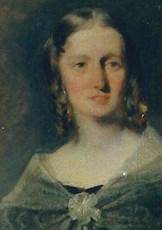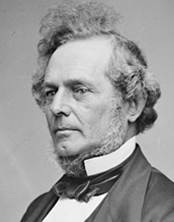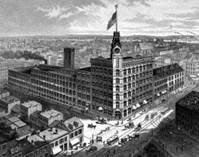The Hoe Type-Revolving Machine
In New York, Hoe was developing rotary technology for the family firm’s steam-driven presses. Many of his US patents are accessible online, including those from 1844, 1847, 1859, 1869 and 1871. Drawings and descriptions in R Hoe & Co’s 1873 catalogue show the immense range of presses and accessories made by the company he had joined in 1827 and run since 1833.
As his fellow inventors had found, Hoe’s most daunting challenge was to fix the printing surface to the cylinder. In 1846, his growing despair was interrupted by inspiration. He worked on it all night and had the turtle method finalised by morning. By its use of type rather than stereotype, the result was called a “type-revolving press”. Applegath in England hit on the same solution at about the same time — a classic example of coincident inventorship.
Hoe’s 1847 patent was the critical one. The cylinder was large, with a diameter ranging from 4ft 6in to 6ft. It was laid horizontally in the press, with the pages set sideways so that the lines of type ran along the direction of spin.
This bore multiple “turtles” that held the type for pairs of pages. A turtle was a curved frame attached to the cylinder by adjustable bolts. Hoe’s inspiration was to taper the blocks bearing the vertical rules that appear between newspaper columns towards the axis of the cylinder so that they acted as wedges holding the moveable type in place. Each turtle was customised for a particular newspaper and for each page when the layout varied.
The type segments were pressed on to the sheet when it passed the impression cylinders on the outer circumference of the central cylinder. These cylinders were interspersed with inking rollers.
Capacity was reflected in the number of impression cylinders specified, so a 4-cylinder printed four copies on one revolution. All Hoe’s machines came with a wide range of options on paper size.
His first sale was of 4-cylinder presses to the Baltimore Sun and Philadelphia Ledger in 1848. These made 10,000 impressions an hour. Over the eight years before he broke into the London market, he sold 16 in the US along with six 6-cylinder and three 8-cylinder machines.
In 1856, Lloyd bought two 6-cylinder machines. Others in Fleet Street soon followed Lloyd’s example. The three sizes cost $12,500, $18,000 and $25,000 according to the number of cylinders (about £15.3m, £22m and £30.5m in modern sterling values). They printed 10,000, 15,000 and 20,000 sheets an hour respectively.
 |
| The Hoe Ten-Feeder Type-Revolving Machine |
The 10-cylinder presses imported by Lloyd in 1861 had the capacity to print 25,000 sheets an hour — the maximum speed at which print workers could feed it with sheets. They were of double width, placing duplicate plates side by side. Hoe sent his colleague, James Hinchcliff, to London to maintain and run Lloyd’s presses. In 1865, R Hoe & Co opened a London office in Dorset Street, near Salisbury Square, and a factory in the neighbouring Tudor Street.




